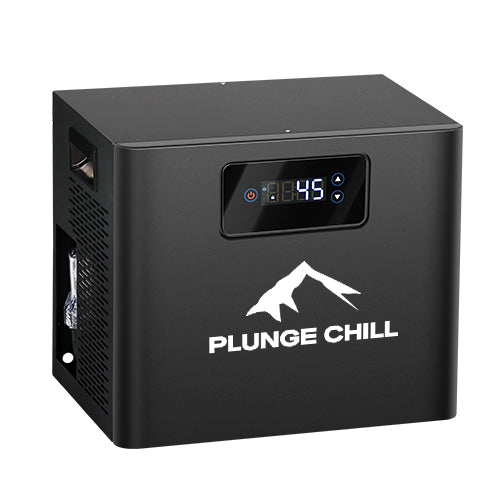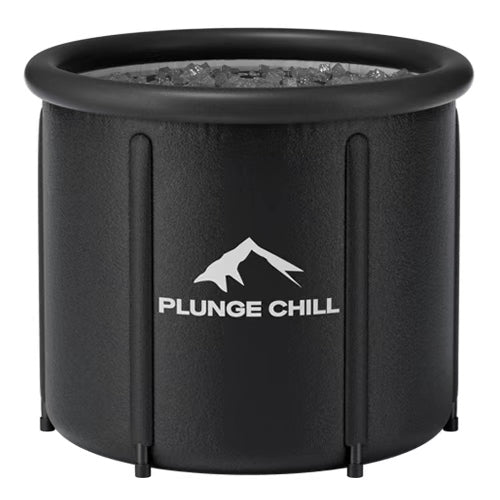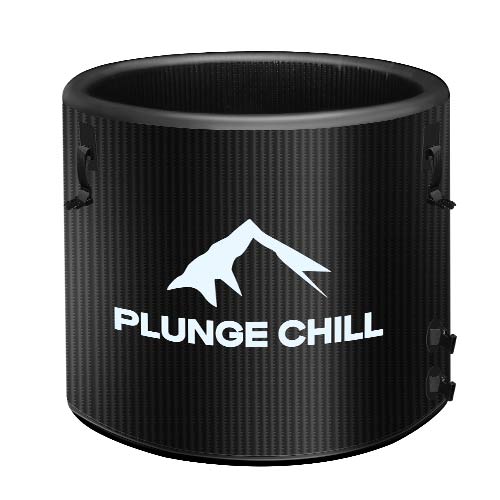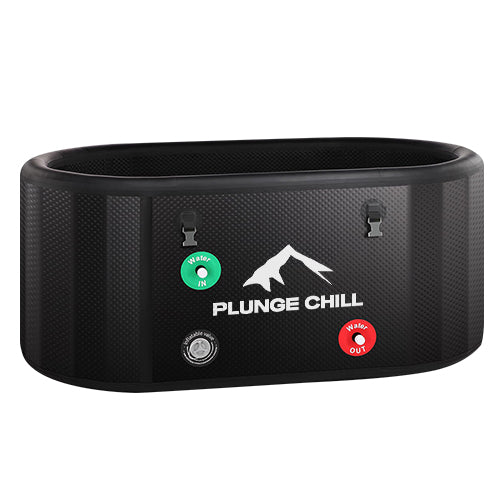Sauna cold plunge therapy combines the benefits of heat from a sauna with the invigorating effects of cold water immersion. This method is known to aid in recovery and enhance overall health. Many individuals appreciate sauna cold plunge therapy for its effectiveness. Research indicates that regular sauna use can lower blood pressure and potentially reduce the risk of heart issues by up to 63%. Cold plunge pools are gaining popularity, with projections suggesting they could generate $409 million by 2029. Athletes and health enthusiasts frequently utilize this therapy, as it helps decrease swelling, improve blood circulation, and elevate mood. If you're seeking to reduce stress or achieve faster recovery, sauna cold plunge therapy is an excellent health strategy.
Understanding Sauna Cold Plunge Therapy
What Is Sauna Cold Plunge Therapy
Sauna cold plunge therapy mixes two opposite practices: sauna heat and cold water dips. It switches between warming your body and cooling it quickly. This practice started in ancient Greek and Roman times and is a big part of Finnish health traditions. Today, people use it in spas, wellness centers, and even at home.
The Kuopio Ischemic Heart Disease Risk Factor (KIHD) Study shows sauna use helps health. Regular sessions can lower high blood pressure by 47%, stroke risk by 62%, and dementia risk by 66%. Cold plunges help with swelling and pain naturally. Together, they are great for relaxing and healing.
The Science Behind Heat and Cold Exposure
Heat and cold affect your body in different ways. Saunas make blood vessels wider, boosting blood flow and sending oxygen and nutrients to muscles. This helps muscles relax and recover. Cold plunges make blood vessels tighter, cutting down swelling and clearing waste from your body.
| Therapy Type | Effect on Blood Vessels | Benefits |
| Sauna | Widens | Improves blood flow and relaxation |
| Cold Plunge | Tightens | Lowers swelling and helps recovery |
Switching between heat and cold gives your blood vessels a "workout." This improves blood flow and helps your body heal naturally.
How It Works: Circulation and Recovery
When you go from a sauna to a cold plunge, your body faces quick temperature changes. This makes your blood system adjust fast. Sauna heat raises your heart rate and blood flow. Cold plunges lower swelling and ease pain.
Sauna Benefits: Loosens muscles, boosts oxygen flow, and helps recovery.
Cold Plunge Benefits: Cuts swelling, clears toxins, and speeds healing.
This mix of heat and cold is loved by athletes and health fans. It helps the body recover and boosts overall health and energy.
Benefits of Sauna Cold Plunge Therapy
Physical Benefits: Recovery and Reducing Swelling
Sauna cold plunge therapy helps your body recover and lowers swelling. Heat and cold together improve blood flow and send oxygen to muscles. This relaxes tight muscles and speeds up recovery after hard workouts.
Switching between hot and cold, called contrast bathing, helps muscles heal. Studies show it improves oxygen delivery and blood flow in athletes. For example, research found better oxygen flow to calf muscles. A review of 52 studies showed 30 minutes of contrast bathing reduced soreness and sped up recovery.
| Benefit | Study Results |
| Better oxygen and blood flow | Athletes had improved oxygen flow to calf muscles. |
| Faster recovery after exercise | 30 minutes of contrast bathing lowered plasma lactate faster. |
| Improved heart rate control | Cold water dips helped the heart and cleared waste from the body. |
By cutting swelling and helping muscles recover, this therapy is great for improving physical performance.
Mental Health Benefits: Stress Relief and Feeling Happier
This therapy helps your mind as well as your body. Cold water dips release chemicals like serotonin and dopamine. These chemicals lower stress and make you feel happier. Regular cold-water swimming has been shown to reduce sadness and improve mood.
Saunas also help mental health. Heat raises your body temperature, which can ease depression symptoms. Studies show saunas lower stress hormones like cortisol and help you relax. The calming effects of sauna use can last for weeks, giving long-term stress relief.
Using both heat and cold can lift your mood and reduce stress. This makes it a great choice for mental wellness.
Overall Health: Heart Health and Living Longer
Sauna cold plunge therapy helps your heart and may help you live longer. Regular sauna use is linked to fewer heart problems and strokes. A Finnish study found men who used saunas often were 40% less likely to die early over 20 years.
| Study/Source | Findings |
| Laukkanen et al. | Fewer heart problems and lower risk of dying early. |
| Finnish long-term study | Sauna users had a 40% lower chance of early death. |
| Study on inflammation | Saunas lowered proteins that cause health problems. |
| Mice study | Cold plunges helped mice live longer, hinting at lifespan benefits. |
Adding sauna cold plunge therapy to your routine can help your heart, reduce swelling, and possibly help you live longer.
How to Perform Sauna Cold Plunge Therapy
Step-by-Step Guide for Beginners
If you're just starting sauna cold plunge therapy, follow these steps:
-
Spend 10-15 minutes in the sauna. This warms your body.
-
Move to the cold plunge for 60-90 seconds. Use water between 55-65°F.
-
Slowly increase sauna time to 15-30 minutes. Extend cold plunges to 2-5 minutes as you adjust.
-
Begin with 1-2 sessions weekly. Change the frequency based on how you feel.
-
Pay attention to your body. Stop if you feel dizzy or uneasy.
To enjoy the process, try adding music or using a timer. After the cold plunge, let your body warm up naturally. Avoid rushing to heaters or hot showers.
Ideal Order: Sauna First or Cold Plunge First
The order of sauna and cold plunge depends on your goals. Most beginners should start with the sauna. The heat relaxes muscles and boosts blood flow, making the cold plunge easier. After the sauna, the cold plunge reduces swelling and removes toxins.
Some experienced users like starting with the cold plunge. It energizes the body, and the sauna afterward helps you relax. Try both ways to see which feels better for you.
Timing and Duration Recommendations
Timing is key to getting the most from this therapy. For beginners, aim for:
Sauna: Start with 10-15 minutes. Increase to 15-30 minutes as you get used to it.
Cold Plunge: Begin with 60-90 seconds. Gradually extend to 2-5 minutes.
Do 3-4 rounds of sauna and cold plunge for one session. Start with one session weekly, then increase to 3-4 times per week for the best results. Watch how your body reacts and adjust the timing if needed.
Tip: If the cold feels too intense, shorten the plunge time. Always check with a doctor before starting if you have health concerns.
Safety Considerations
Who Should Avoid Sauna Cold Plunge Therapy
Not everyone can safely try sauna cold plunge therapy. Some health issues and medicines make it risky. If you have any of these conditions, avoid this therapy:
| Condition | How Common It Is |
| Horner Syndrome | About 1 in 6,000 people |
| Hypohidrotic Ectodermal Dysplasia | 1 in 100,000 births (US) |
| Naegeli-Franceschetti-Jadassohn Syndrome | 1 in 2-4 million people |
| Fabry Disease | 1 in 40,000 people |
Certain medicines can also affect how your body handles heat or cold. These include:
-
Drugs like hexamethonium that block certain nerve signals
-
Atropine and other drugs that affect sweat glands
-
Calcium channel blockers
-
Alpha-blockers like phentolamine
-
Clonidine and similar drugs
-
5-fluorouracil
-
Topiramate
-
Zonisamide
If you take these medicines or have these conditions, talk to your doctor first.
Common Risks and How to Stay Safe
Sauna cold plunge therapy is safe for most healthy people. But it can stress your heart, especially after cold water dips. If you have heart problems, it may cause spasms in your heart arteries.
To stay safe, follow these steps:
- Avoid extreme heat or cold. Keep the sauna under 200°F and cold water above 50°F.
- Start with short sessions. Slowly increase time as your body gets used to it.
- Drink water before and after to stay hydrated.
These tips can help you lower risks and enjoy the therapy safely.
Recognizing and Respecting Your Limits
Pay attention to how your body feels. Stop right away if you feel dizzy, tired, or weak. Ignoring these signs can lead to serious problems.
Tip: Begin slowly, especially if you’re new to this therapy. Gradual exposure helps your body adjust better.
Your safety is the most important thing. Change the time and intensity based on how you feel. If unsure, ask a doctor before starting.
Adding Sauna Cold Plunge Therapy to Your Routine
How Often Should You Do It
To get the most from sauna cold plunge therapy, be consistent. Studies show just 11 minutes of sauna use weekly can help. Split this into two sessions of 5-6 minutes each. For cold exposure, aim for 11 minutes weekly too. Divide this into 2-4 sessions lasting 1-5 minutes each.
If you want to build strength and endurance, longer sessions may help. Start small and slowly increase your time as your body adjusts. Regular practice lets you enjoy the benefits without overloading yourself.
Tip: Start with two sessions a week and change based on how you feel.
Creating a Lasting Wellness Routine
Making sauna cold plunge therapy a habit takes planning. Pick specific days and times for your sessions. Treat it like an important part of your health routine. Adding other activities, like stretching or mindfulness, can make it more fun.
Set small, easy goals to stay on track. For instance, begin with one session a week. Add more sessions as you get used to it. Keeping a record of your progress can inspire you to continue.
Note: Pay attention to your body and don’t push too hard. Balance is key to keeping this habit long-term.
Pairing It With Other Recovery Methods
Sauna cold plunge therapy works great with other recovery techniques. Research shows combining cold exposure with massage helps reduce swelling and soreness. Scandinavian swimmers who use this therapy report better metabolism, less stress, and improved temperature control.
| Recovery Method | Benefits When Paired With Sauna Cold Plunge Therapy |
| Massage | Lowers swelling and eases muscle pain |
| Exercise | Boosts blood flow and speeds recovery |
| Stretching | Increases flexibility and relieves tightness |
Switching between heat and cold improves blood flow and clears waste. Adding these methods to your routine can boost the benefits and improve your overall health.
Sauna cold plunge therapy combines benefits for your body and mind. Saunas help you relax, remove toxins, and support heart health. Cold plunges aid muscle recovery, lower swelling, and build mental strength. Together, they improve blood flow, boost energy, and support your immune system.
If you're trying this therapy for the first time, start small. Spend 15 minutes in the sauna, then do a 3-minute cold plunge. Repeat this two times and end by resting. Pay attention to how you feel and ask a doctor if unsure.
Tip: Practice regularly. It can improve recovery, reduce stress, and boost wellness over time.








